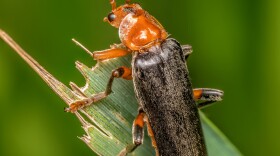They say that two heads are better than one. Then it must go without saying that three or four heads must be even be better?
No, we’re not talking about the Hydra – the serpent-like monster in Greek mythology with nine heads. We’re talking about the caterpillar of a very real species of moth.
In order to grow, every species of insect needs to molt, or shed its exoskeleton, a number of times. Each time an insect molts, the old protective covering from every body part is shed – the legs, abdomen, thorax, any hairs on the body, as well as the head.
Most species of caterpillars will molt five times before entering the pupal stage – the last stage of development before transforming into an adult moth or butterfly. So what happens to all of those old exoskeletons?
Some caterpillars take advantage of this nutritional resource by eating their shed skin before returning to their typical diet of leaves. Others will simply discard their former shell of a self.
But for the Multi-headed Caterpillar, it apparently can’t stand to waste a good head. Instead of eating or discarding the old head capsule after molting, it wears it like a hat.
Even more amazing, each time it molts, it will stack the older, smaller head capsule on top of the most recently shed head – creating a towering hat of up to four old faces.
Why? There hasn’t been any research conducted to determine exactly why the Multi-headed Caterpillar carries around this cranial fedora. It’s likely an attempt to confuse would-be predators from snatching its real head – supporting our initial declaration that the more heads, the better.





